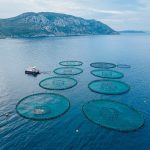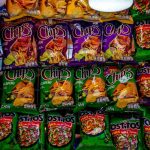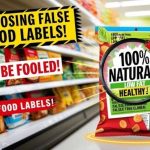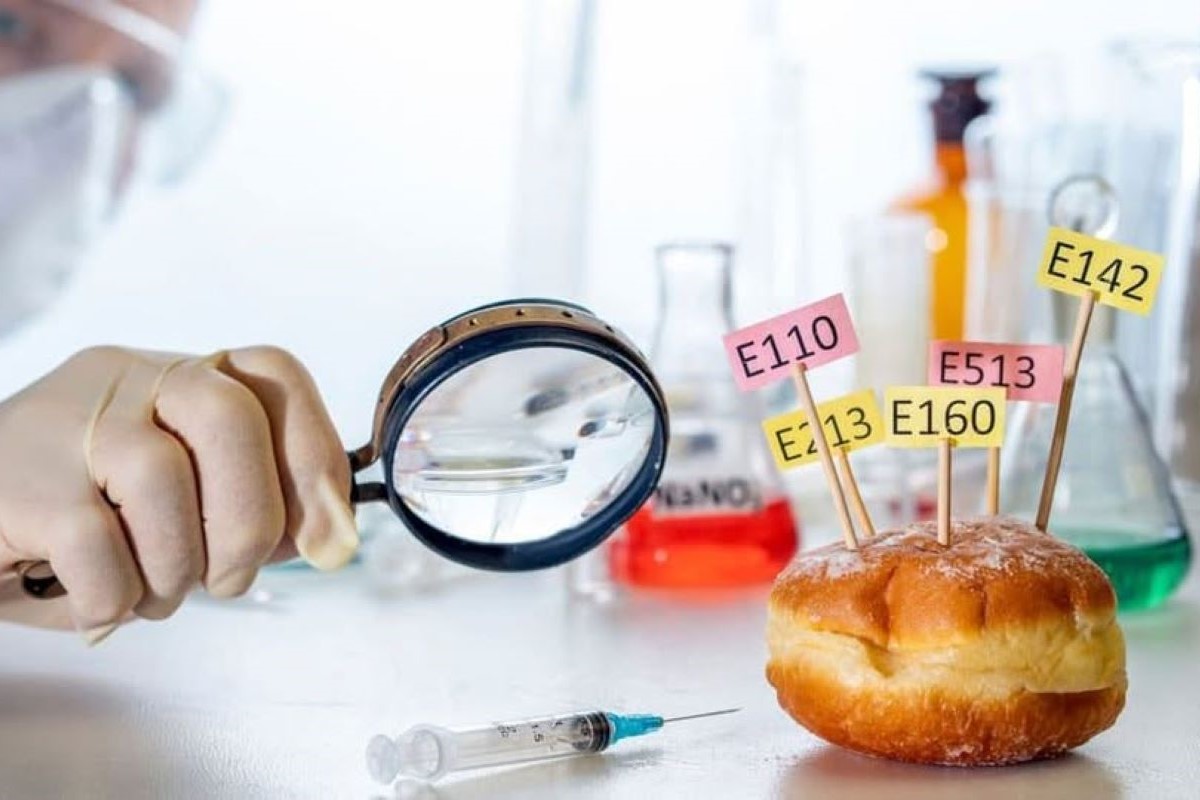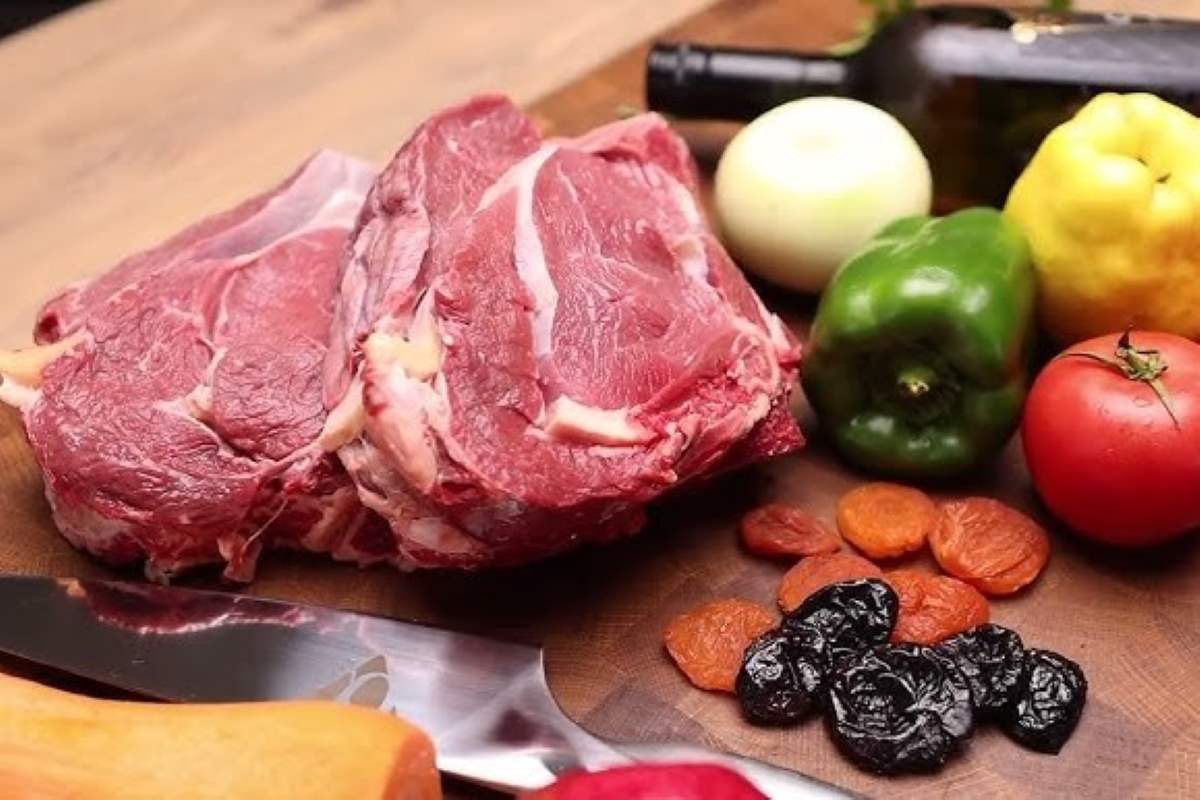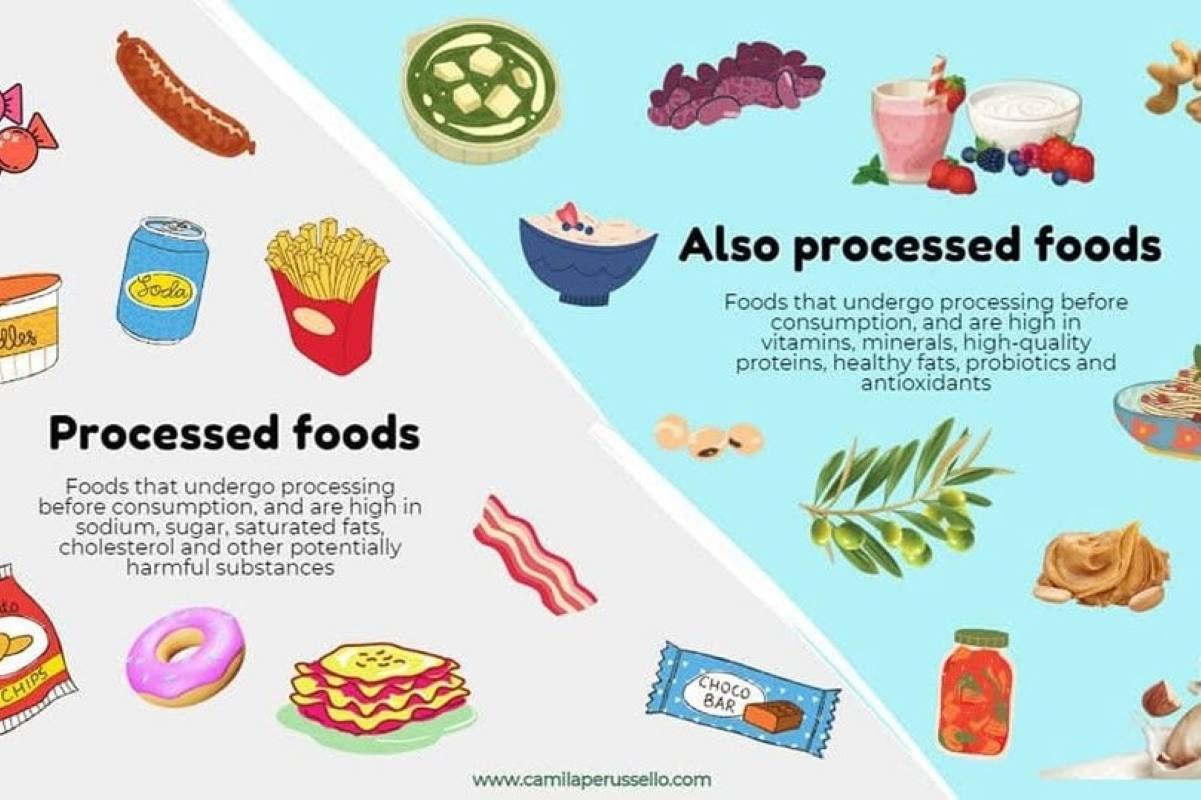The Industrial Revolution brought mass-produced, processed foods and some of today’s common food additives. Some people ubiquitously see monosodium glutamate (MSG) on food labels, but can’t tell what it is. Fret not if you fall in this category, because you’re not alone.
Today, most commercially processed foods contain additives. This makes it necessary to understand, at the very least, the common ones. There have been controversies and misgivings, historic and recent, around chemical additives in food.
So, stick around as we discuss the ten most common food additives. This article will identify the purpose and safety profile of each item on the food additives list.
What Are Food Additives and Why Are They Used?
Food additives are substances added to food during processing, production or packaging for quality enhancement. The specific food quality being improved and the food additive functions determine its categorization.
Some common categories of food additives are highlighted below:
- Colorants: For improving the hue of food
- Sweeteners: These are substances that sweeten food
- Stabilizers: substances that help preserve the structural integrity of food
- Emulsifiers: Are also stabilizers, albeit specifically for preserving the stability of emulsions—foods containing blends of water and oil
- Preservatives: All foods tend to deteriorate over time, but this category of additives keeps them wholesome for longer
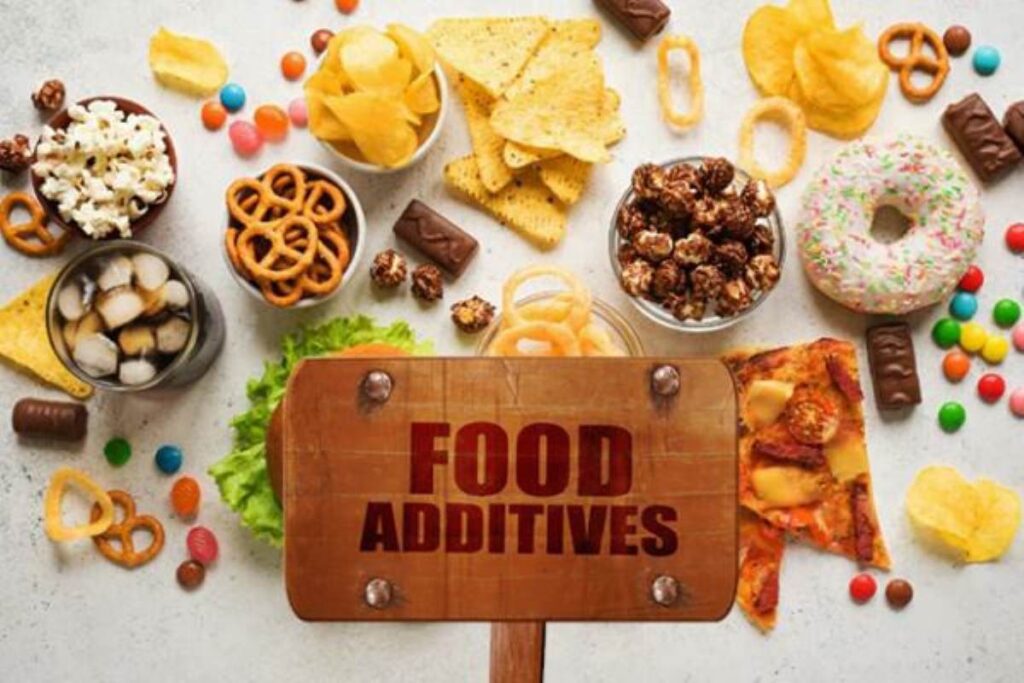
Food additives are also sometimes categorized by their origin. Additives from organic origins, plants and animals, are natural. Meanwhile, if the same substance is synthesized in a laboratory, it automatically falls under the artificial additive category.
Bodies like the WHO, EFSA, and FDA have the oversight of chemical additives in food, artificial flavor enhancers, artificial preservatives and every other additive you can imagine. Judging by regulatory crackdowns, artificial additives undergo more scrutiny than their natural variants. We’ll examine the reason for this later.
ALSO READ: Are Organic Foods Really Healthier? The Truth Behind the Hype
10 Common Food Additives to Know
Welcome! You have arrived at the compilation of the ten most common food additives. By the time you’ve digested this section, you’ll be able to identify most preservatives on packages through food label decoding.
1. Monosodium Glutamate (MSG)
Monosodium glutamate (MSG) is a sodium salt of glutamic acid. It is a naturally occurring amino acid, with detectable amounts found in cheese, tomatoes and some meats. However, MSG is produced commercially through industrial fermentation.
MSG is typically added to food to enhance the flavour, or ‘umami’, of food mixes. This glutamic salt is commonly added to commercial food products like instant noodles, sauces, soups, frozen dinners and fast food.
Some individuals experience sensitivities from consuming foods containing MSG. However, the FDA lists it as a generally recognized as safe (GRAS) additive.
2. Sodium Nitrite
Sodium nitrite (NaNO3) is a salt that is synthesized industrially. It often comes as a white or yellowish crystalline powder, though you’re unlikely to encounter it in this form.
NaNO3 is added for one or a combination of four reasons. To extend shelf life by preventing fats in food from going bad; enhance food flavor; retain the color of foods like meat; or eliminate the possibility of food poisoning by making food inhabitable for spoilage microorganisms. You’re likely to find NaNO3 on the label of packaged processed foods like smoked fish, bacon, hot dogs, ham, salami, sausages, and lunch meat.
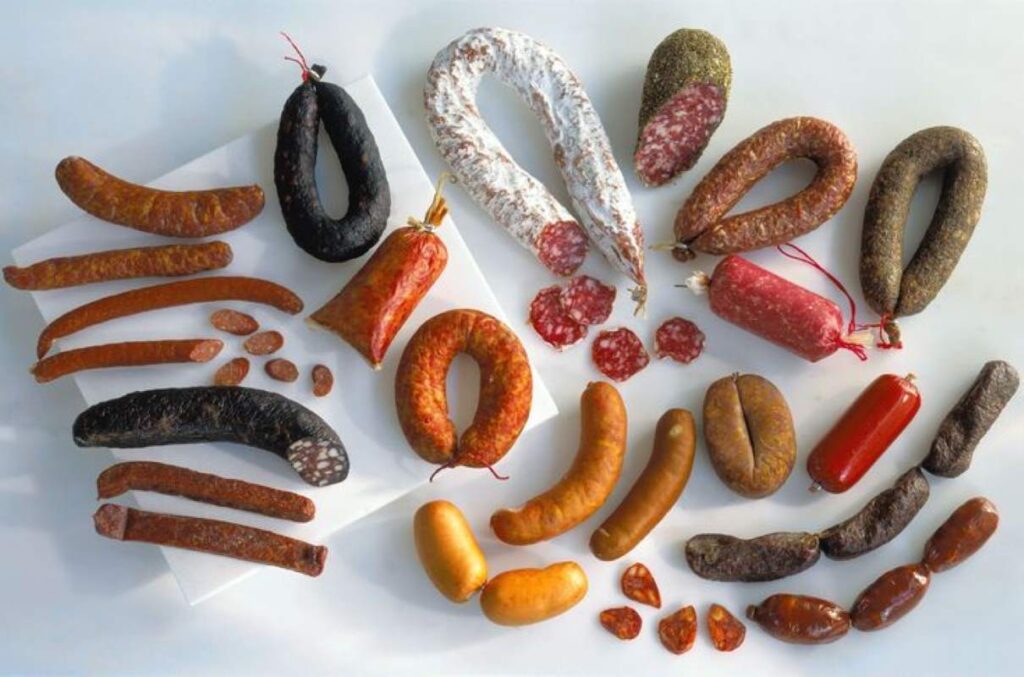
Among the common food additives, NaNO3 has been a subject of many controversies. Studies have ruled it as harmful due to its potential carcinogenicity—cancer-causing tendency. Regulators have not banned the preservative, but make sure manufacturers add it to food in only permissible quantities.
3. BHA/BHT
Butylated hydroxyanisole (BHA) and Butylated hydroxytoluene (BHT) are synthetic antioxidants that are commonly used as preservatives in fat-rich food products. The duo are one of the common food additives used to keep fried foods, or those with high fat content, from going rancid and losing flavor.
BHA/BHT prevent food rancidity basically by neutralizing free radicals. These preservatives are commonly added to foods like potato flakes, cereals. In some cases, BHA/BHT is not introduced directly into food. Instead, a certain quantity is dosed into the packaging material, from where the preservative leaches into the product.
Some studies suggest that consuming foods preserved with BHA/BHT can disrupt the body’s endocrine system. This simply means that it causes inconsistencies in hormone production. Also, studies have found that extended exposure to BHA/BHT in food could lead to cancer growth. Nonetheless, most countries, including the US, still allow its use in commercial food production.
It’s okay to have reservations about the food additive health risks of this synthetic preservative. The only way to avoid ingesting BHA/BHT is to steer clear of all ultra-processed foods.
4. Sodium Benzoate
Sodium benzoate is a white crystalline synthetic organic salt. It is used in foods as an antimicrobial preservative.
Only very few species of bacteria, yeast and mold grow in acidic food products. These few ones are culpable for the microbial spoilage of acid foods like sauces, jams, pickles, and salad dressings. So, sodium benzoate is the go-to preservative for keeping these kinds of food products shelf-stable.
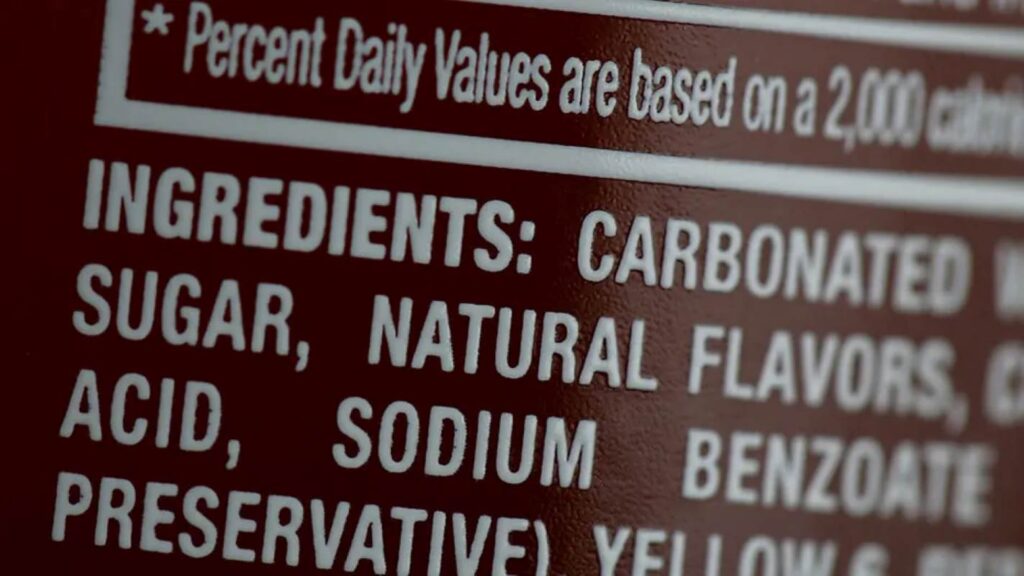
An FDA overview of food additives classifies sodium benzoate as safe. Irrespective of the green light given to its use in food preservation, the food regulator limits permissible amounts to 0.1% of food.
5. High-Fructose Corn Syrup
High-fructose corn syrup (HFCS) is one of the most common food additives around. It is a sweetener made from cornstarch by the hydrolysis of its complex carbohydrates into simple sugars. The hydrolyzation process is controlled to make it yield fructose and glucose.
HFCS is popular with food manufacturers because it is cheaper than cane sugar and just as sweet.
The FDA classifies HFCS as a GRAS sweetener. However, there are many studies that suggest its consumption leads to weight gain and accompanying health challenges. Donald Trump recently made a case for using cane sugar in cola products. He was taking a subtle jab at the excessive reliance on HFCS as a sweetening agent.
6. Artificial Food Dyes
Artificial food dyes are non-essential food additives that are used to enhance food color. As the name implies, they are synthetic petroleum-derived colorants that have received regulatory clearance for use in food.
All food materials experience some color alterations, slight or major, during processing. Artificial food dyes are food-grade chemicals that help restore the visual allure of the final product.
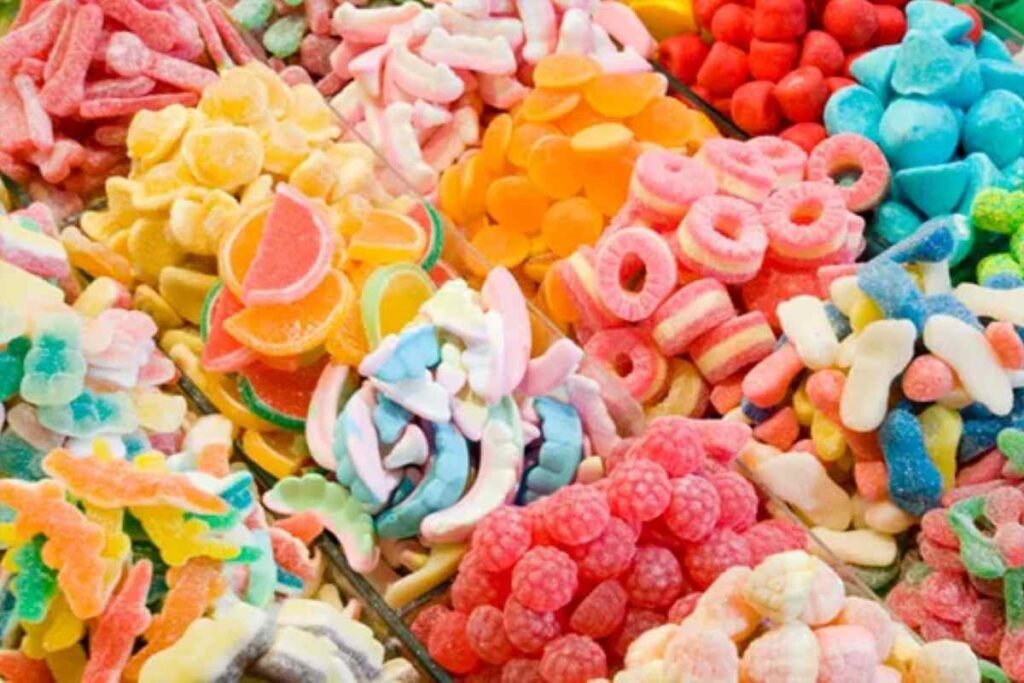
During Trump’s second term in office, the federal government has embarked on a crackdown on US food companies using artificial additives, largely due to food coloring concerns. Some of the acclaimed food additive health risks of artificial dyes are carcinogenicity, allergic reaction, and hyperactivity in kids. Nonetheless, the debate about the safety of these colorants is still ongoing.
7. Carrageenan
Carrageenan is a complex carbohydrate extracted from red seaweed, making it a natural food additive. It is used in food and beverages as a thickener, stabilizer and gelling agent. Carrageenan could also serve as a vegan alternative to gelatin.
Food companies have the FDA’s clearance to use carrageenan in commercial products. However, research has it that it may cause digestive issues and inflammation in individuals who are prone to food allergies and sensitivities.
8. Aspartame
Aspartame is a high-intensity artificial sweetener. With this additive, you can eat your ‘sweetness’ cake and still have it. Each molecule of aspartame contains two amino acids and is touted as 200 times sweeter than sugar. This sweetener is said to be non-caloric because it contributes zero calories when ingested in foods.
Since the use of aspartame reduces production costs, it is sometimes used in the manufacture of diet sodas, some medications, and sugar-free products.
Regulatory bodies like the JECFA, EFSA, and FDA deem aspartame a safe artificial additive. Albeit these regulatory bodies stipulate an acceptable daily intake (ADI) of aspartame in food.
9. Xanthan Gum
Xanthan gum is a natural food binder, thickener, and stabilizer. It is a carbohydrate produced by using a bacterium, Xanthomonas campestris, to ferment simple sugars. Xanthan gum is commonly used in foods like gluten-free baked goods, salad dressings and sauces, and dairy products.
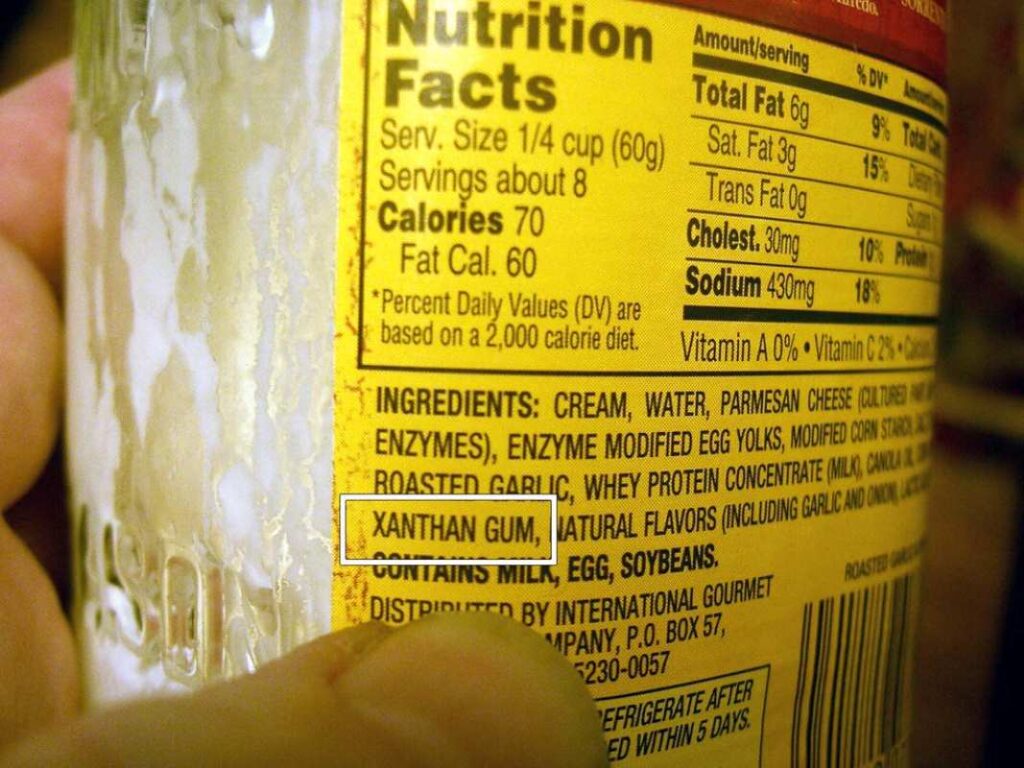
The FDA considers xanthan gum as safe among common food additives. However, it may cause digestive issues in some individuals, particularly at the instance of high intake.
10. Potassium Sorbate
Potassium sorbate is a potassium salt of sorbic acid. It is a synthetic additive often added to food as a preservative. Usually, potassium sorbate in food checks the growth of spoilage bacteria, yeasts, and molds by disrupting their metabolic activities.
You are likely to ingest this potassium salt in foods like pickled vegetables, sauces and jams, wine and soft drinks, cheeses, bread, cakes, etcetera. The FDA regards potassium sorbate as safe, while the WHO has pegged its ADI at 25 mg/kg of body weight.
How to Read and Understand Food Labels
The global consensus for commercial food products is that ingredients used in each formulation are to be declared on the package. However, it is one thing for food companies to list out ingredients on packages and another for the consumer to understand food label decoding. For example, some food-grade chemicals are represented by E-numbers on the ingredient list.
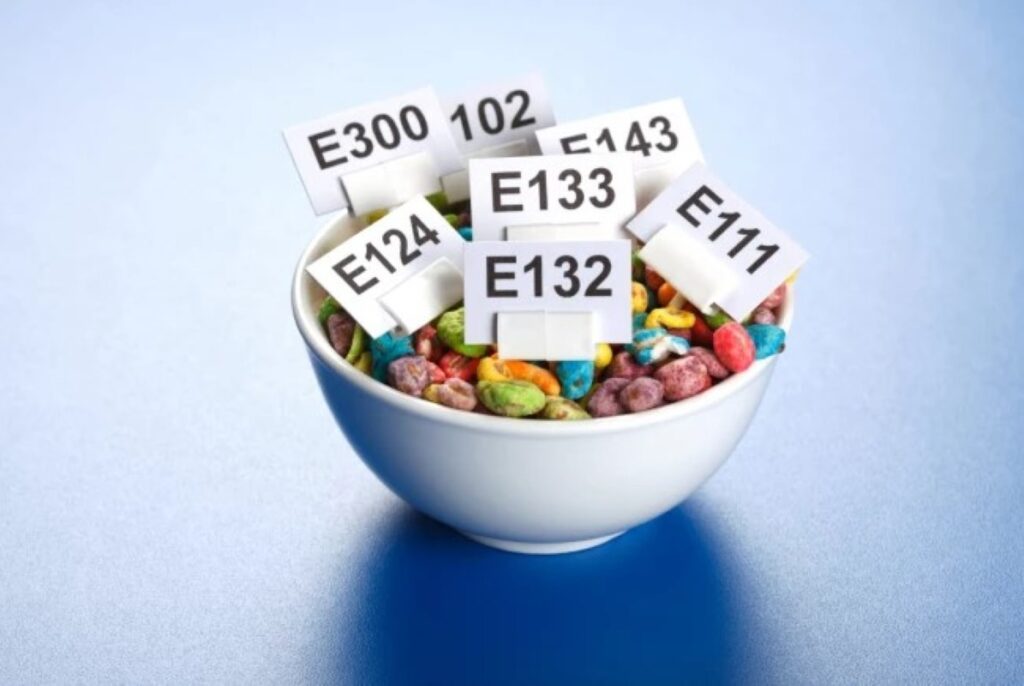
E-numbers originated from the European Union, but are now used around the world. They are simply short codes for identifying food additives. Even if you cannot identify the specific additive, the list below can help you identify the category and guess its function:
- E100—E199: Colors, e.g. E110 is sunset yellow
- E200—E299: Preservatives, e.g. E202 is potassium sorbate
- E300—E399: Acid Regulators and Antioxidants, e.g. E300 is ascorbic acid
- E400—E499: Emulsifiers, Stabilizers, and Thickeners, e.g. E407 is carrageenan
- E500—E599: Anti-Caking Agents and Buffers, e.g. E501 is potassium bicarbonate
- E600—E699: Artificial Flavor Enhancers, e.g. E621 is MSG
- E700—E799: Antibiotics, e.g. E701 is tetracycline
- E900—E999: Sweeteners, Gases, and Glazing Agents, e.g. E951 is aspartame
- E1000—E1599: Additional Additives, e.g. E1401 is acid-treated starch
There, you have E-number ingredients explained. However, the foremost tip for choosing processed food based on its ingredient list is to follow the less-is-more approach.
ALSO READ: Why Eating Local Is Good for Your Health and the Planet
Are Food Additives Dangerous?
Many consumers prioritize the sensory allure of their food. However, many are also getting health-conscious and asking questions like, “Are food additives safe?” Additives are like most other beneficial things, which become deleterious when used in excess. So, most of the common food additives are safe when consumed in small amounts, per the regulatory ADI. The dose makes the poison.

However, the FDA or WHO passing some specific preservatives in packaged food as safe does not guarantee clearance for everyone. Individuals who are prone to food sensitivities and allergies should be extra careful of ultra-processed foods. If it’s heavily processed, chances are high that the food is propped up on a scaffolding of food additives. The Cleveland Clinic’s guide to food additive safety offers more context.
From the foregoing, it is easy to perceive that food additives are not inherently harmful. However, understanding each additive, its function(s), and limitations can help you make smarter choices. The next time you handle a commercial food product, read the label with open-minded curiosity, not fear.
Not all hard-to-pronounce ingredients are dangerous—but knowing what they do gives you power at the plate.

